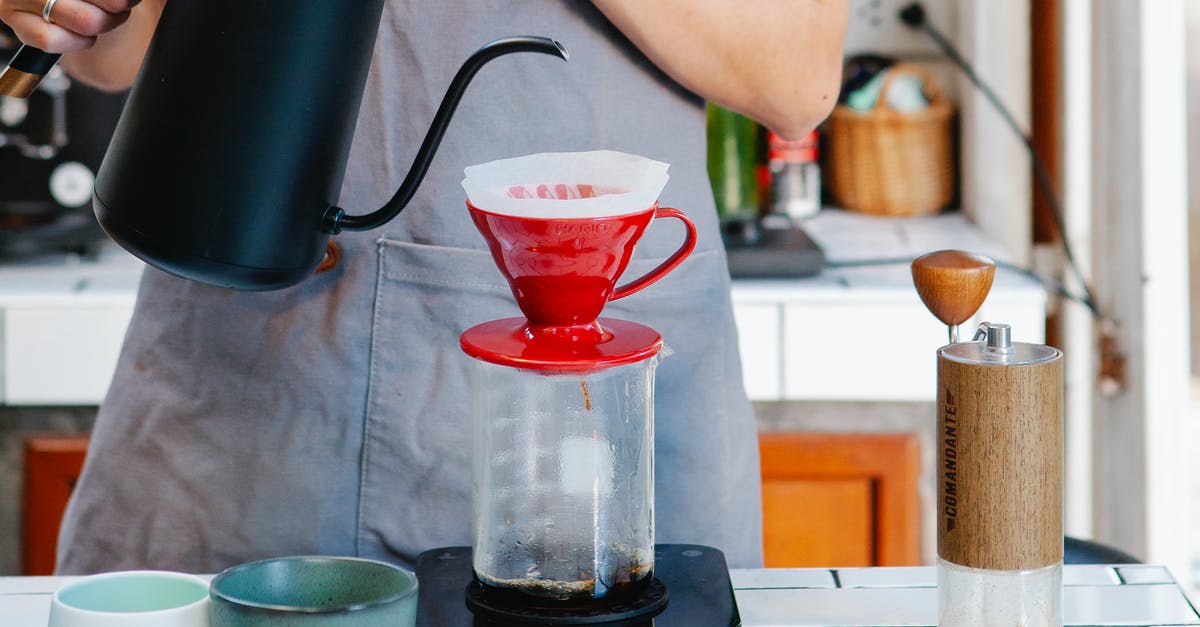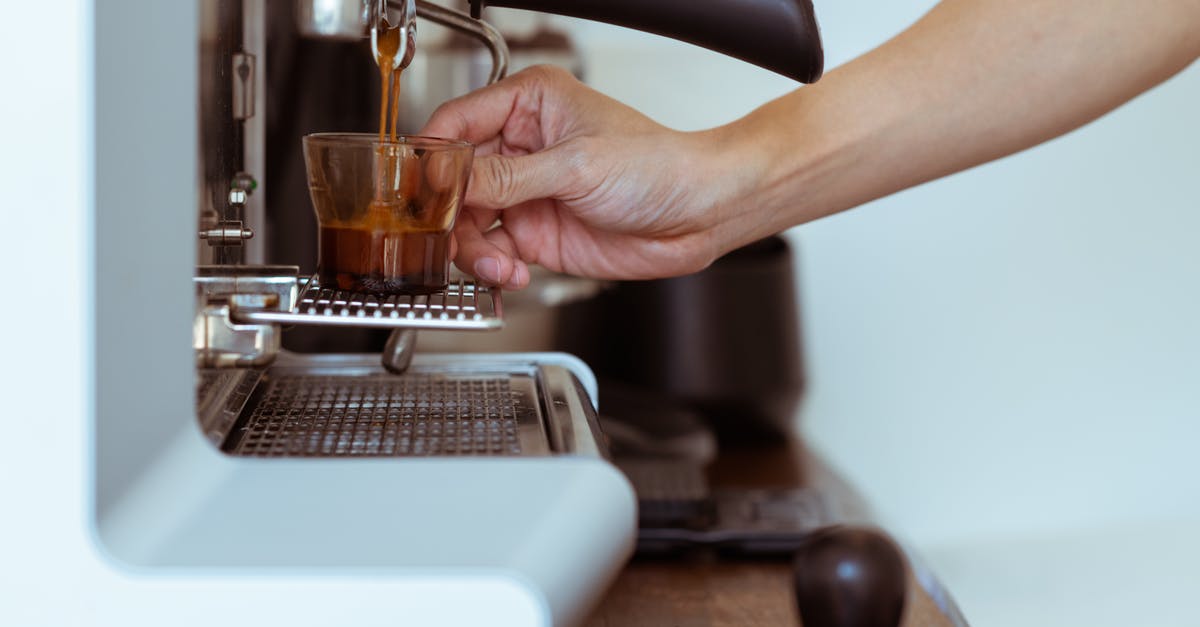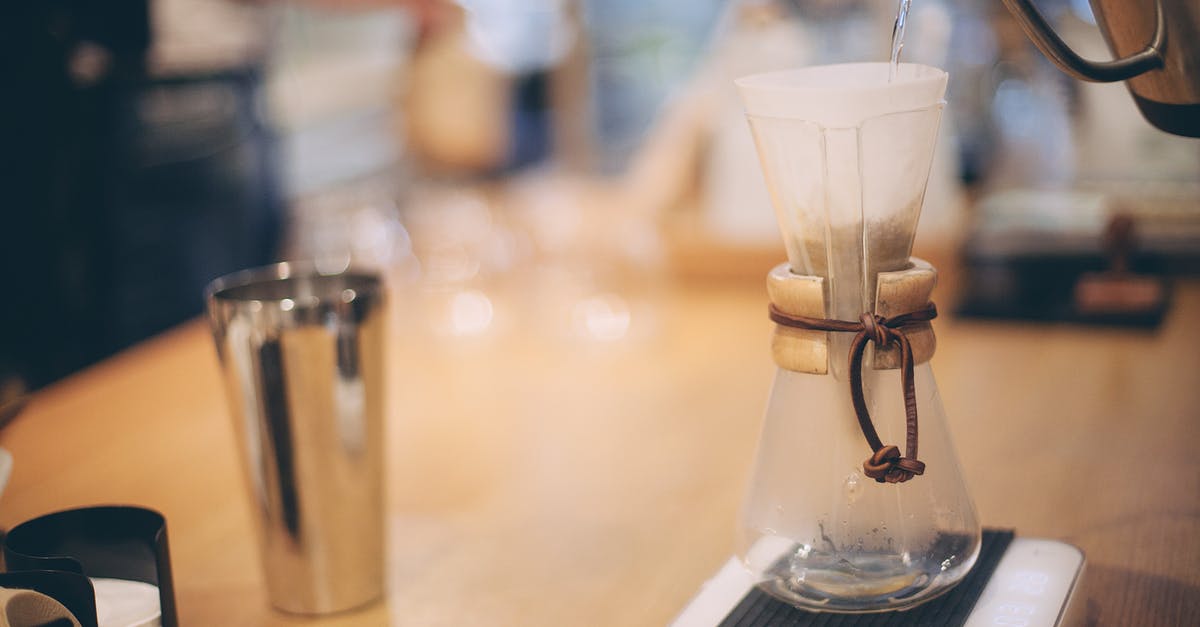When *brewing* Irish coffee in a drip coffeemaker or French press, do I need to use more Irish whiskey?

Back in the early 1980's I received a very nice coffeemaker as a gift. (Okay - it was very nice for the 1980's.) There was a small recipe booklet that came with it that had a great recipe for Irish coffee in which the Irish whiskey was put into the carafe along with superfine sugar and then the coffee was brewed into it. After the coffee finished brewing you would stir it and let it sit on the hot plate for about 10 minutes and then pour, top with whipped cream, and serve.
It was so good! It seemed to have more depth to the flavor and no hard edge on the whiskey. Smooth but not lacking in any way.
The recipe booklet is long gone and I can't remember the details of the recipe. When making Irish coffee the standard (for lack of a better word) way, adding Irish whiskey to a cup of coffee, I usually add 1-1/2 oz to 2 oz whiskey to 6 oz of coffee. (Depends on what mood I'm in or who I'm serving it to.)
I want to try the brewing method again so I'm wondering if I need to use more Irish whiskey to get the same flavor. I hope someone has an answer. If not, this could be a fun experiment!
Best Answer
I don't think you'd need to increase the proportion. You could, but I'd probably advise against it mostly because of sobriety concerns. It's much easier to over-serve someone with a more potent cocktail than it is a milder one - especially after the first couple.
This is kind of an interesting method, and I think the key to success is the gentle heating of the whiskey over the heating element before the coffee is dripped in. Ethanol is pretty potent stuff (ever seen a Molotov Cocktail in action?) and will evaporate more readily than water will. This is why when adding wine, vermouth, etc. to a dish, you can drive off most of the alcohol at stovetop temperature well before the water evaporates. Adding the whiskey to a warm carafe is likely driving off a small percentage of the alcohol, reducing its bite (and its punch as well, but this seems like a reasonable tradeoff for something generally considered a dessert drink).
Some of the depth of flavor could also come from volatile flavor compounds (things like esters which develop as spirits age) being driven off or changing composition. Heating spirits or setting them on fire isn't a common trick these days, but historically bartenders often used it to transform how the flavor of spirits is sensed by the drinker's palate. It's the flip side of chilling and diluting drinks through stirring or shaking, and it's a good substitute for those in the middle of winter, when more ice is the last thing you want.
I think it's also worth pointing out that the brand and variety of both coffee and whiskey will do a lot to change the end result. Coffee obviously has a huge number of origins and roast levels, plus myriad other factors that can affect its flavor. Irish whiskey varies too; it's often seen as a monolithic category, but it'll differ as much as scotch or bourbon depending on the quality of the mash, how it was distilled, and the aging process. Powers is unapologetically brash and spicy; Knappogue Castle is a much more subtle product that would be really well-suited to this type of application.
Pictures about "When *brewing* Irish coffee in a drip coffeemaker or French press, do I need to use more Irish whiskey?"



Does alcohol cook out in Irish coffee?
At the end, after pouring the coffee into glasses. Alcohol evaporates entirely at 78'C but begins to evaporate before that, so any unnecessary heating should be avoiding. The coffee is cooled slightly by being poured into a glass, so that's the optimum time. Source: being Irish.How do you make layered Irish coffee?
MethodWhat cream is used in Irish coffee?
You don't need bartending experience or any special equipment to whip these up. My favorite Irish coffees are made with freshly brewed coffee, high-quality Irish whiskey, and topped with real whipped cream, which you can make in about 10 minutes if you have the time.What makes cream float in an Irish coffee?
How do you float cream on Irish coffee? To float cream on any coffee drink, make sure the coffee is hot, add sugar for a little extra viscosity, and don't over-whip the cream. Pour it gently onto the coffee, over the back of a spoon.How to Make an Irish Coffee | Black Tie Kitchen
Sources: Stack Exchange - This article follows the attribution requirements of Stack Exchange and is licensed under CC BY-SA 3.0.
Images: Tim Douglas, Nikita Belokhonov, Ketut Subiyanto, Maria Orlova
